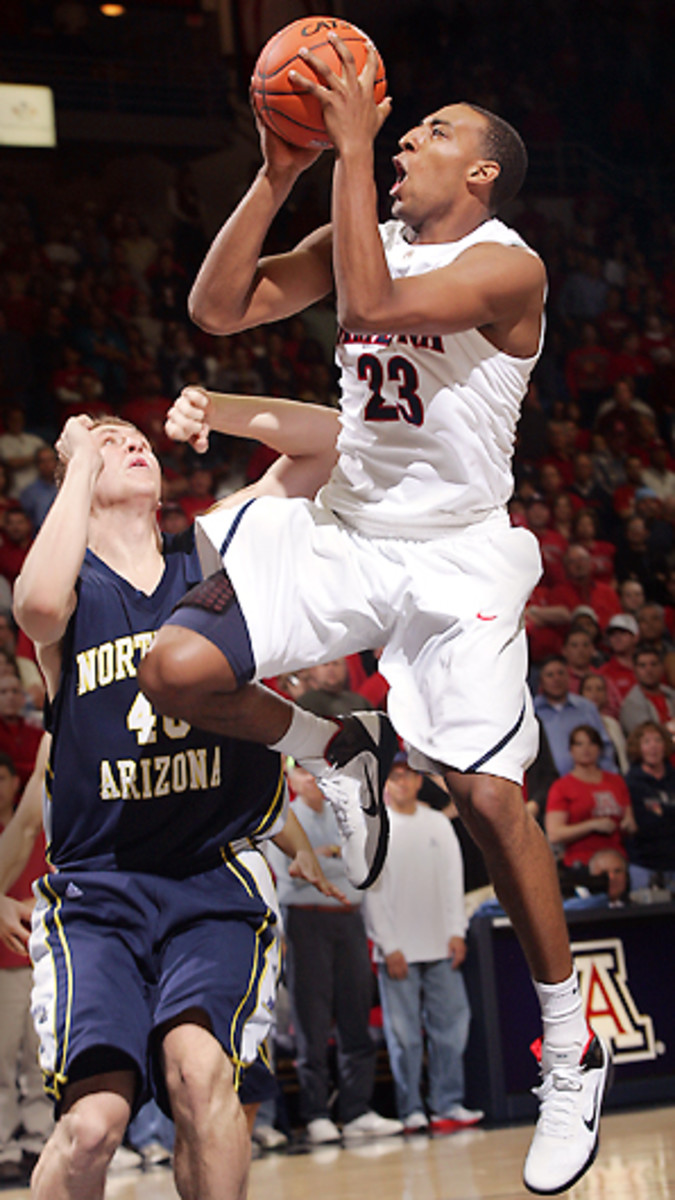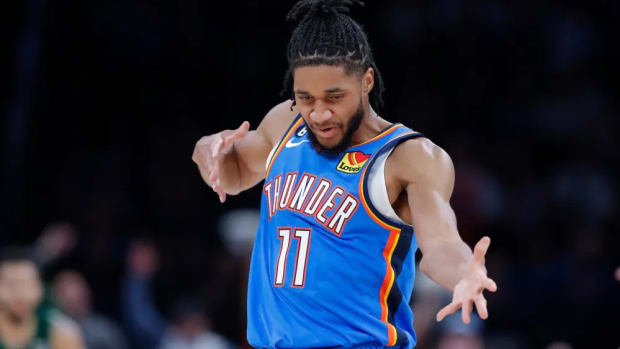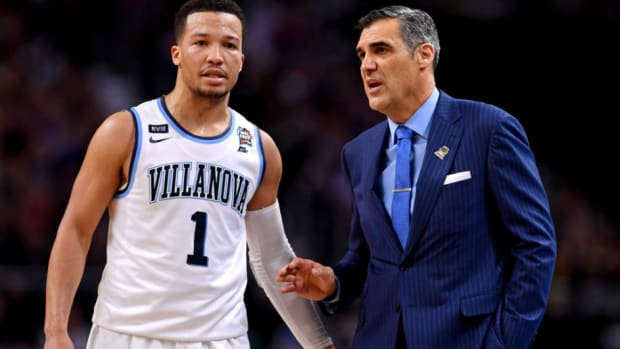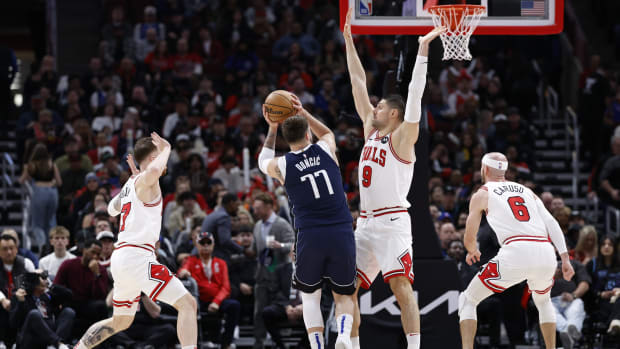
Emerging college stars who have radically increased their NBA stock
Predicting the potential improvements made by players in their late teens and early 20s isn't always an exact science. Roles on college teams can fluctuate, and some players mature physically and mentally slower than their peers. Others can take a huge jump in ability over the course of a single summer simply by getting more serious about their diet, workout routine or improving on a specific skill, such as their shooting or ball handling.
Stanford's Landry Fields only averaged four points per game in his first two years of college basketball. Three years later, he is one of the most productive rookies in the NBA after being taken in the second round of the 2010 draft.
It's important to keep evaluating players with a fresh mind year after year. You never know when a Russell Westbrook, Deron Williams, Danny Granger or Kevin Martin -- all lightly regarded prospects early in their college careers, now averaging over 20 points per game in the NBA -- will burst into the spotlight and force us to radically change our previous conception of a player's pro potential.
The following six players were all well-known NBA prospects entering the season, but they have upped their draft stock significantly with their play thus far.
6-foot-2, Junior, Point Guard
The former McDonald's All-American was already considered one of the top point guard prospects in college basketball entering the season, but not many people anticipated him developing into one of the nation's leading scorers and a charismatic floor general for an undefeated UConn team currently ranked No. 4 in the country.
Walker's shooting percentages are through the roof, while his turnovers are down, despite carrying an incredibly heavy load for his team offensively every night. A likely first rounder had he entered the draft after last season, Walker is now drawing comparisons to Brandon Jennings and is looking more and more like a top-10 pick with each game he plays. Sometimes staying in school does pay off.
6-8, Sophomore, Power Forward
The Pac-10 freshman of the year last season, Williams has elevated his game to a different level as a sophomore, emerging as one of the best players in all of college basketball with his stellar play. Brutally efficient inside the arc, Williams has added a three-point shot to his scoring arsenal and is getting to the free-throw line at the second-best rate in the NCAA. He's putting up player of the year-caliber numbers, but has also led his team to an 11-2 record, with the two losses coming on the road against Kansas and BYU.
From an NBA perspective, Williams is erasing many of the doubts scouts had about him with his basketball IQ, competitiveness and sheer productivity. Slightly undersized for a power forward and not exceptionally athletic to compensate, Williams makes up any shortcomings he may possess with an incredibly high skill level. His ability to put the ball on the floor and create his own shot from the perimeter makes him an incredible mismatch at the 4-spot, and his new-found shooting range makes him even more dangerous offensively. Not one to just hang out on the perimeter, Williams likes to mix it up inside the paint, as well, and can do plenty of damage with his back to the basket.
How far Williams can take Arizona in March will play a big role in where he ends up getting drafted. Right now, it's becoming increasingly difficult not to project him as a lottery pick.
6-10, Senior, Small Forward/Power Forward
A surprise invite to the USA Basketball Select team that was chosen to scrimmage against the U.S. national team before the FIBA World Championships in Turkey, Leuer has quietly emerged as one of the most underrated players in college basketball.
You'd be hard-pressed to find a more efficient and productive player in the country. In the first 12 games of this season, Leuer averaged just under 25 points per 40 minutes, shot nearly 52 percent inside the arc and 50 percent from three-point range while getting to the free-throw line often. Not to mention making significant contributions as a passer, rebounder and shot-blocker.
Somewhat stuck between the small forward and power forward positions, and not possessing very good length or athleticism to compensate, Leuer was always going to face an uphill battle making his case as an NBA prospect, especially from a defensive standpoint. The fact that he's making 50 percent of his three-pointers (up from 39 percent last year) helps his cause tremendously, though, as he has the ability to stretch the defense with the range he possesses as a 6-10 forward. With his excellent passing skills, terrific basketball IQ and impressive pedigree, along with the amount of games he's won in his four-year career at Wisconsin, Leuer is someone that could very well make a disciplined, half-court-oriented NBA coach very happy.
6-11, Junior, Power Forward/Center
It was just a matter of time before Zeller showed what made him such a highly touted prospect coming out of high school (McDonald's All-American and consensus top-20 recruit).
With a series of injuries finally behind him, Zeller has emerged as North Carolina's No. 1 option as a junior, stealing the limelight away from fellow blue-chippers John Henson and Harrison Barnes (amongst others) in the process. He's scoring almost 23 points per 40 minutes, rebounding the ball extremely well, blocking shots and getting to the free-throw line like it's going out of style.
That has to be catching the eyes of the legion of NBA scouts that follow North Carolina from game to game -- you just don't find that many skilled and mobile 6-11 power forwards who can play inside and out and have a good feel for the game like Zeller. He must continue to add strength and improve his defense significantly, but Zeller has clearly elevated himself into the NBA draft's first-round discussion with his play thus far.
6-7, Sophomore, Shooting Guard/Small Forward
Seeing less than 20 minutes per game last season on an underachieving Texas team, Hamilton struggled making the transition to collegiate role-player. It often looked like he was still playing AAU basketball at times, much to the chagrin of head coach Rick Barnes.
That hasn't been an issue this year, as Hamilton has emerged as Texas' go-to guy, a role that suits his aggressive mentality and style of play much more. This has really allowed him to show his virtues as a pure scorer, to the tune of nearly 20 points per game. Deadly with his feet set from behind the arc, Hamilton can also score in the post, coming off screens and off the dribble in the open floor with his tremendous body control. He still has work to do on his shot-selection and decision-making, and he can't be described as anything more than a below-average defender, but players of his nature are major commodities in today's NBA.
Any team looking to give its offense a major shot in the arm by drafting a big-time perimeter scorer will need to give him a serious look.
6-3, Senior, Point Guard
The most prolific distributor in the NCAA last season, McCamey likely had very high hopes when he decided to enter the NBA draft this past June. Alas, he received little-to-no interest during the much-shortened period in which underclassmen were allowed to investigate their NBA draft stock, and was forced to return to Illinois for his senior year.
Things ended up working out pretty well for McCamey, as he spent a part of the summer working with former Illinois point guard Deron Williams, and came back slimmer and with a chip on his shoulder. He's been on an absolute tear since the season started and has elevated his draft stock considerably in turn. He's put himself firmly in the conversation of being considered a first-round pick, and could help himself even more if he can build on Illinois' 10-3 start and make a deep run in the NCAA tournament.


































